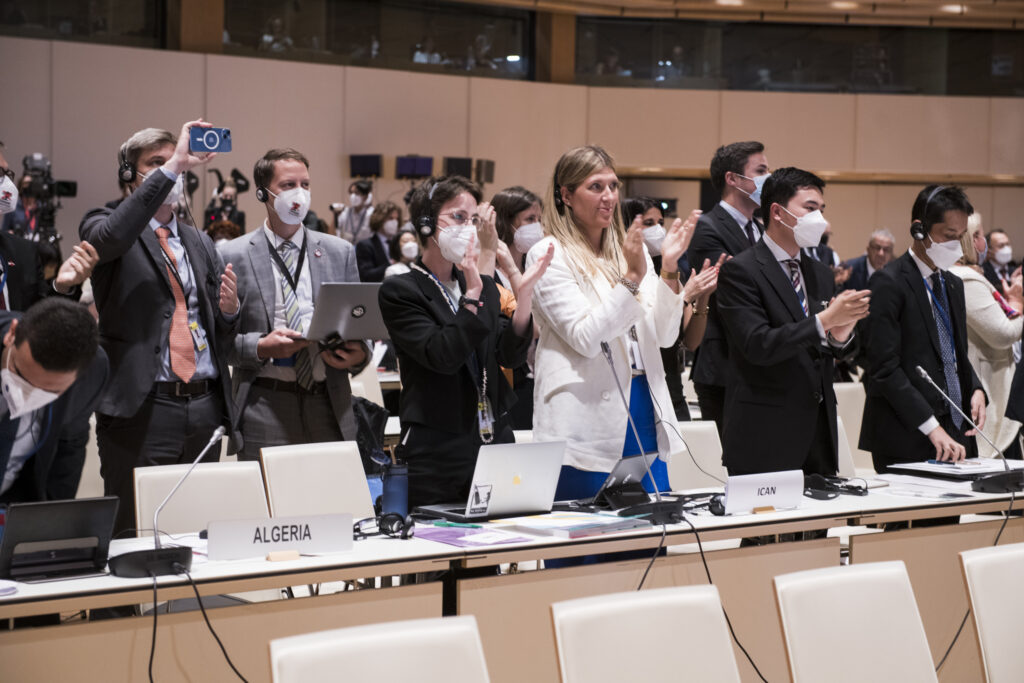
In the Vienna Action Plan, adopted in 2022 at the first annual meeting of the Treaty on the Prohibition of Nuclear Weapons (TPNW), states parties resolved to establish reporting guidelines on victim assistance, environmental remediation, and international cooperation and assistance. By regularly reporting on national measures taken to implement their Article 6 and 7 obligations, states parties could significantly enhance the articles’ effectiveness and advance the TPNW’s humanitarian objectives. Reporting could add value by promoting monitoring and accountability, encouraging the exchange of information and expertise, and facilitating assistance between states parties.
Harvard Law School’s International Human Rights Clinic (IHRC) has published a 37-page report on reporting guidelines under the TPNW to inform states parties’ discussions of the subject. The treaty’s positive obligations working group, co-chaired by Kazakhstan and Kiribati, plans to address the topic of reporting before the Second Meeting of States Parties. In its report, IHRC provides a comparative analysis of the reporting regimes of three other disarmament and arms-related treaties. Drawing on this precedent and adapting it as necessary to the nuclear weapons context, the Clinic makes recommendations for the establishment of reporting guidelines for Articles 6 and 7 of the TPNW.
The IHRC report focuses on four areas of reporting: format and process, victim assistance, environmental remediation, and international cooperation and assistance. The IHRC report examines three treaties and their associated voluntary guidelines: the Mine Ban Treaty, the Convention on Cluster Munitions, and Protocol V on Explosive Remnants of War to the Convention on Conventional Weapons. It follows the mandate of the Vienna Action Plan to “tak[e] into account best practices for reporting under other disarmament treaties.” The IHRC report also includes an appendix with three tables that detail key elements of the precedent treaties’ reporting guidelines, divided by victim assistance, environmental remediation, and international cooperation and assistance, respectively.
The IHRC’s recommendations respond to the Vienna Action Plan’s call for reporting guidelines that are voluntary, non-burdensome, and drawn from other disarmament treaties. Regarding the format and process of reporting, IHRC recommends that states parties file initial reports with existing knowledge, followed every two years by reports with updated information, and ensure that all reports are publicly available and submitted under clear deadlines. IHRC also makes detailed but practical recommendations regarding the substance of the reports on TPNW Articles 6 and 7, which should include:
- Data on victims and contaminated areas, and the criteria for determining them;
- Development and implementation of frameworks for addressing victim assistance and environmental remediation such as national plans, laws and policies, and focal points;
- Status and progress of measures to assist victims and remediate the environment;
- Efforts to include affected individuals and communities, including Indigenous Peoples, at all stages of victim assistance and environmental remediation; and
- Details of assistance provided to or received or requested from other states parties.
For a summary of the report’s findings, see this powerpoint slideshow presented at a meeting of the positive obligations working group.
Clinical students Jacob Walker JD ’24, Jacqulyn Kantack JD ’24, and Halena Ngo JD ’24 worked on this publication under the supervision of Bonnie Docherty, director of the Clinic’s Armed Conflict and Civilian Protection Initiative.